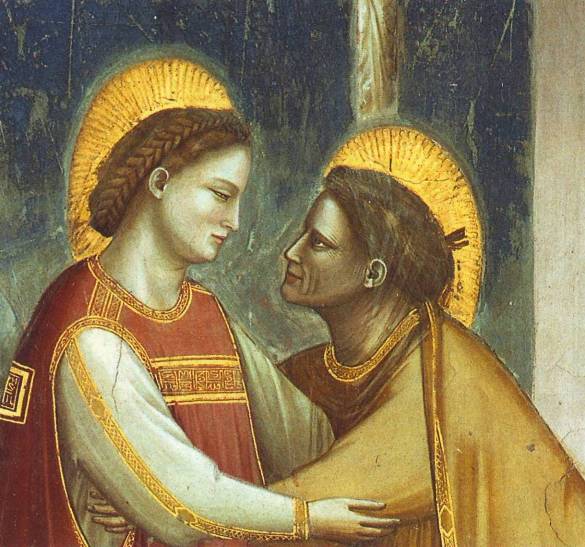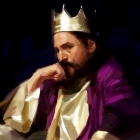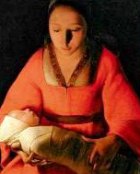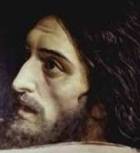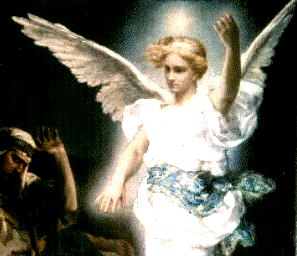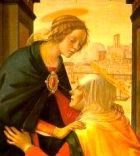Priests in the Bible – what did they do?
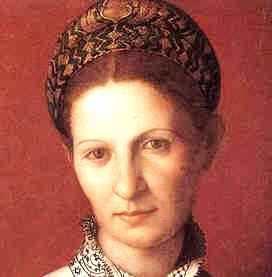 Priests or kohen (like Elizabeth’s husband Zechariah) were specialists in worship and religion. It was their responsibility as holy men to perform ritual acts which were forbidden to ordinary people and might even be dangerous to them.
Priests or kohen (like Elizabeth’s husband Zechariah) were specialists in worship and religion. It was their responsibility as holy men to perform ritual acts which were forbidden to ordinary people and might even be dangerous to them.
The duties of the priests of Israel were:
- to serve God in a sanctuary
- to mediate between God and man by means of various cultic acts, notably sacrifice and the burning of incense
- to make oracular pronouncements and interpret them
- to perform ceremonies of purification
- to distinguish between harmless and dangerous forms of leprosy
- to bless the people by special formulae
- to provide instruction on cultic obligations, i.e. in the Torah, which means essentially, “instruction in the way of God”
- to maintain and guard the sanctuaries.
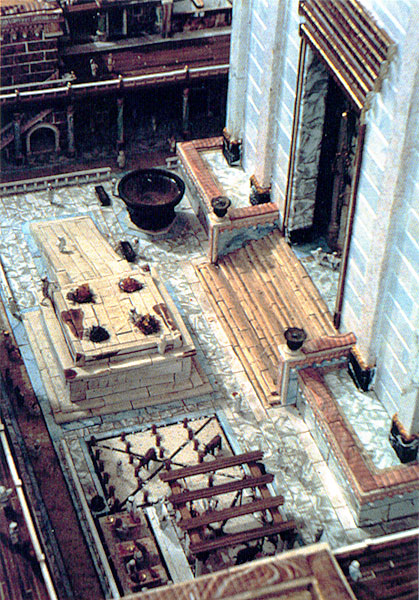
Above: Reconstruction of the Court of Israel in the Temple of Jerusalem.
This was a central area where priests offered sacrifice to Yahweh
Sanctuaries and settlements of priests and Levites were also havens of refuge.
Before the institution of the priesthood, sacrifices had been offered by laymen for themselves, for example by Moses or Jacob.
Even after the priests were established, this was still possible, but the priests officiated in the sanctuaries. They were the specialists and they acted as mediators between the worshipper and God.

Why did the priest sacrifice to God?
The role of the priests was to bring the blood of the sacrifice into direct contact with the altar and to burn there that part of the animal that was reserved for God.
- When ministering at the altar, offering a sacrifice, or burning incense, the priest was acting as the people’s representative before God.
- When delivering an oracle, he was transmitting a message from God.
- When expounding Torah (or Law), he was passing on and interpreting divine teaching.
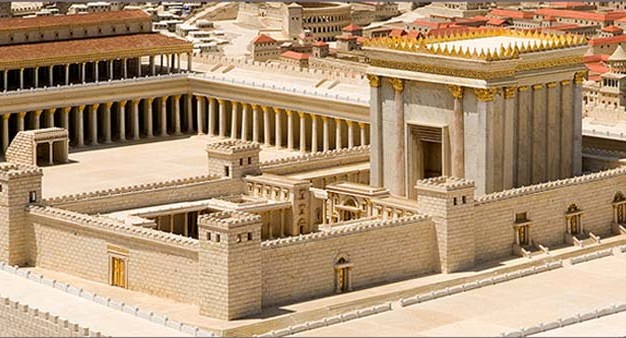
The Temple of Jerusalem, still under construction at the time Elizabeth and Zechariah lived, was a magnificent building
In ancient Israel, priests were not “ordained”. They began their duties without any preliminary rites designed to confer special grace or powers on them.
Priesthood was not a vocation, but an office which a man might inherit or to which he could be appointed. Holders of the office were holy and sacred because they had quitted the profane world and entered a sacred realm “set apart” for the service of God.
Hereditary Priesthood
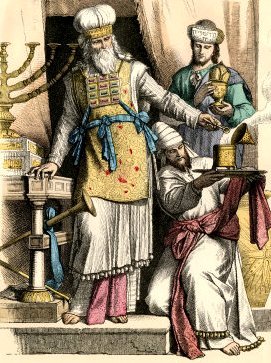
A Jewish priest and a Levite in ancient Israel; see the menorah and the incense
In ancient times, most professions were hereditary. This worked well with the priesthood, because it meant there was
- orderly maintenance of the holy places and
- preservation of all the ancient traditions.
Throughout the ancient world, in Egypt, Assyria, Phoenicia, Greece and the pre-Islamic world, the priesthood, its privileges and responsibilities were handed down from generation to generation.
This meant that the priestly tribe of Levi had a special place in Israel’s society. They were not allotted territory like the other tribes at the beginning of the agricultural settlement of Israel. This may have been deliberately done to prevent them becoming too wealthy and powerful, as priests were in Egypt.
What was the status of Priests?
Priests were an elite group, more wealthy than any ordinary citizen. They formed the strongest and wealthiest class in Jerusalem, politically and economically.
But judging by comments from visitors to Palestine they were worthy of the respect given to them by ordinary people. The Greek historians Hecataeus and Aristeas commented on the magnificence of the High Priest’s appearance, but also on the discipline by which 700 priests worshipped and served at the Temple without sound or bustle.
And Elizabeth?

What does all this mean for Elizabeth? For her son John, and her provincial cousin Mary of Nazareth?
Zechariah does not seem to have been among the high echelons of priestly society, but he was certainly well above the average citizen in wealth and status. Elizabeth was the wife of an important man, and probably came from a relatively well-to-do family herself.
Her son John was brought up surrounded by talk of religious ideas, perhaps reformist in nature, in what in modern terms would be a comfortable middle-class home – something he seems to have rebelled against completely later on.
Where did Mary of Nazareth come in to all this?
Somehow Mary was related to this well-to-do family. How, we do not know, since her branch of the family seems to have come down in the world, so that she was living in an unimpressive village in the remote provinces.
But when she became unexpectedly pregnant there was a refuge for her with her kinswoman Elizabeth, who gave Mary shelter against the wrath of her immediate family.
For additional information on the lives of women in the Bible, see
Family, Work and Religion: the tribe, the family, slaves, women’s tasks, beliefs
Milestones in a woman’s life: Puberty, menstruation, marriage, childbirth, death, burials
Activities and questions
Investigative Reporting
1 Luke:1-4 says: 1 Many have undertaken to draw up an account of the things that have been fulfilled among us, 2 just as they were handed down to us by those who from the first were eyewitnesses and servants of the word. 3 With this in mind, since I myself have carefully investigated everything from the beginning, I too decided to write an orderly account for you, most excellent Theophilus, 4 so that you may know the certainty of the things you have been taught.
It may be my imagination, but this seems very like a description of investigative journalism.
Task: Imagine you are Luke, a journalist. Prepare a set of questions you would like to ask each of the three main characters in the story: Elizabeth, Zechariah, or Mary.
Then imagine you are one of these three, and give the answers you think they would have given in an interview.
Comparing the Songs
Read the Song of Hannah (2 Samuel 2:1-10) at bottom of page several times, so that its rhythm and imagery become familiar to you.
Now read the Song of Elizabeth (Luke 1:39-45) and the Magnificat (Luke 1:42-55), noting the similarities and differences.
What significance for Christians can be read into the points of difference?
Save
Dozens of extra ideas at Bible study activities: Elizabeth
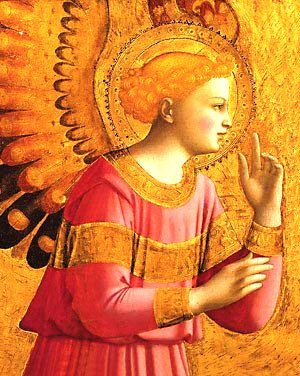
A medieval artist’s idea of an ‘angel’, the messenger of God
Search Box
![]()
Elizabeth – links
© Copyright 2006
Elizabeth Fletcher

